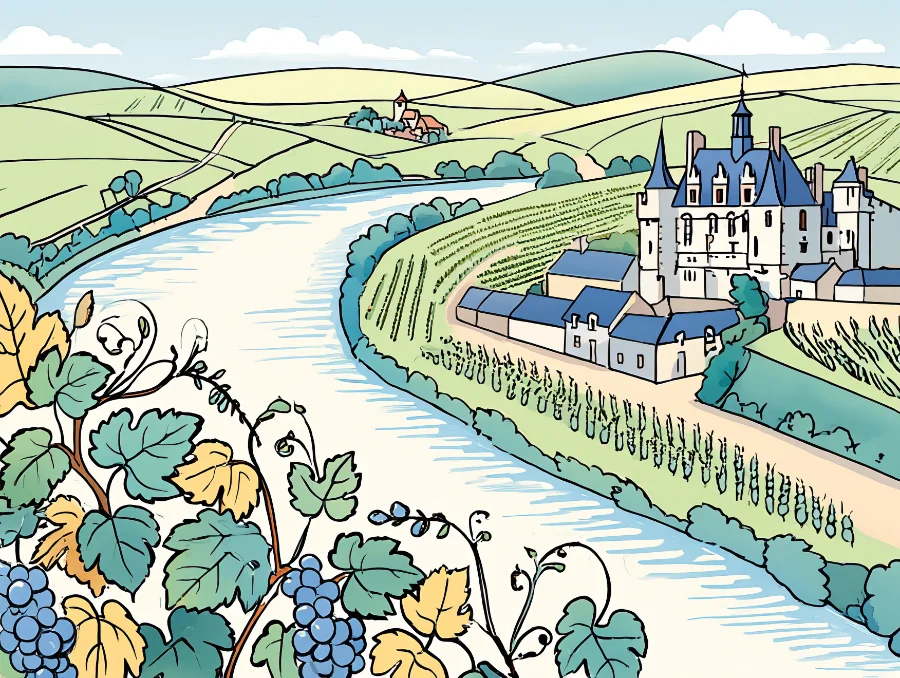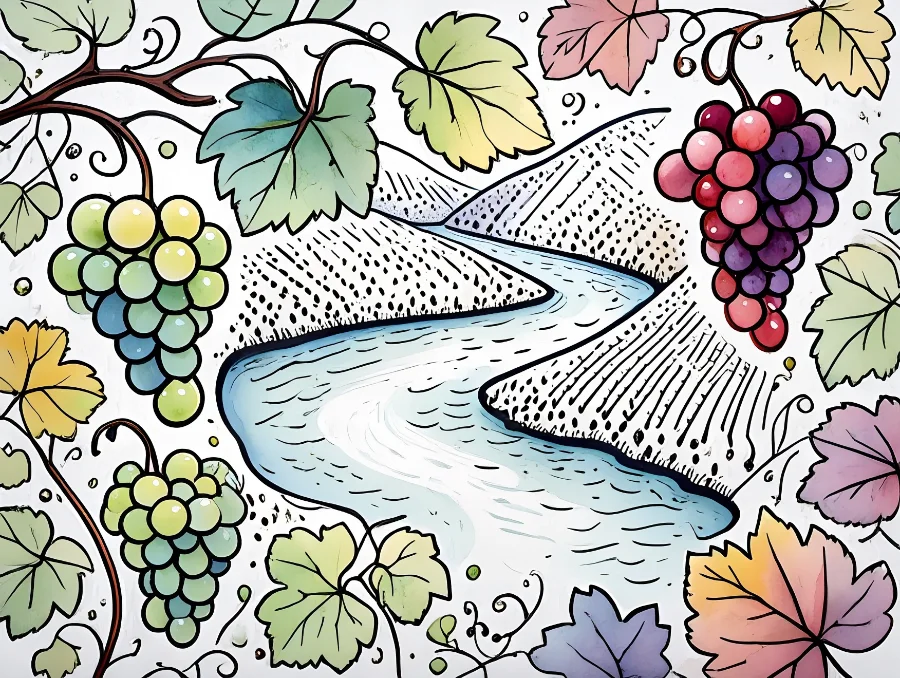La Devinière, Birthplace of Rabelais, a French Literary Giant (and great wine amateur)
Nestled like a clever word in a witty phrase, La Devinière is tucked away in the heart of the Loire-Anjou-Touraine Regional Nature Park. This 15th-century limestone manor, classified as a Historical Monument, is the presumed birthplace of François Rabelais. Today, it houses the Rabelais Museum, the only establishment dedicated to this major figure in French literature. The estate consists of several remarkable buildings: a main residence, a 17th-century dovecote-barn, troglodyte dwellings with vast cellars, and a winemaker’s house, all surrounded by a garden, an orchard, and vineyards.
The museum traces Rabelais’ life and work through a rich collection of rare editions, ancient engravings, and portraits, including one by Matisse. The rooms, tastefully arranged, tell the gargantuan epic of this humanist with an insatiable intellectual appetite through small touches. Did you know that Rabelais invented more than a thousand neologisms that persist in our language today? One proof among many that our good François was always ahead of his time – and probably had a glass in hand too 🙂
The troglodyte caves offer a welcome coolness during hot summer days. One descends into them as if diving into the depths of Rabelaisian thought: with curiosity and a touch of excitement. These vast caves, created from limestone extraction, once served as cellars and storage spaces for the estate. Today, they host exhibitions and allow visitors to better understand Rabelais’ universe.

The museum is open year-round, with hours varying by season. From April to June and in September, it welcomes visitors from 10am to 12:30pm and from 2pm to 6pm. In July and August, hours are extended until 7pm, while between October and March, the museum is open from 10am to 12:30pm and from 2pm to 5pm, closed on Tuesdays. Guided tours are offered, providing an enriching immersion into Rabelais’ world and his era.
Since its opening in 1951, the museum has undergone several restoration and expansion campaigns, including the acquisition and renovation of adjacent buildings in the 1980s-1990s, as well as landscaping with vineyard planting in 2004. These efforts have preserved and enhanced this exceptional heritage, offering visitors a unique cultural and historical experience.
Visiting Rabelais’ Home: The Playful Museum That Captures His Humorous Spirit
The charm of La Devinière, François Rabelais’ birthplace located in Seuilly in Touraine, lies in its ability to combine an exceptional historical setting with a playful approach to literature. Classified as a Historical Monument, this 15th-century “country house” is surrounded by gardens, an orchard, and vineyards, where visitors can discover artistic installations with deliberately absurd proportions, such as giant spoons and oversized books. These unusual objects pay homage to Rabelais’ Pantagruelian spirit and captivate both children and adults alike.
Since May 2024, the museum has enriched its collection with new installations celebrating the humor and extravagance dear to the writer. Visitors can also explore the troglodyte caves and the “Clos de La Devinière” vineyard, reconnecting with the wine-making traditions of the place. These elements offer a unique immersion into Rabelais’ universe, where his work comes alive in an authentic and evocative setting.
ADVERTISING

Partner offer
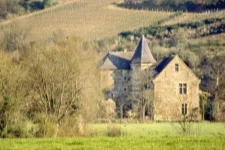
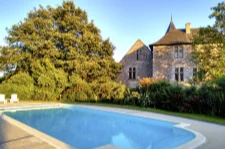
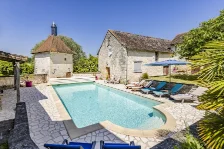

Handpicked estates near Loire’s finest vineyards.
The museum guides play a key role in this experience. Scholarly without being pontificating, their approach mixes savory anecdotes and literary references with infectious enthusiasm. They don’t hesitate to compare Rabelais’ subversive humor to that of Monty Python, thus highlighting the modernity and universality of his work. Through this visit, La Devinière invites its visitors to rediscover literature from a relaxed and joyful angle, faithful to the humanist and satirical spirit of its famous occupant.
Feast, Write, Wander: The Rabelaisian Experience at La Devinière
The traditional visit to La Devinière is enriched with immersive experiences that appeal to literature lovers and those seeking original discoveries. The writing workshops, for example, invite participants to try their hand at the art of hyperbole and neologism, in pure Rabelaisian tradition. These creative sessions give birth to works oscillating between genius and absurdity, perfectly capturing the spirit of the master of the house.

The “sung walks” add a poetic and musical dimension to the visit. While walking the paths once traveled by François Rabelais, visitors are accompanied by musicians performing Renaissance melodies. These walks offer a unique cultural immersion, where the Chinon landscapes become the theater for an encounter between history and music.
The “Gargantuan pause,” meanwhile, celebrates the pleasures of the table dear to Rabelais. Local products are featured in a generous feast that would delight Gargantua himself. This convivial moment reminds us that Rabelaisian philosophy often begins with a full belly and a well-moistened throat.
Finally, the museum also offers a “sound journey” entitled A Landscape to Listen To, which invites visitors to explore the place through a sensory and literary experience. This sound journey enriches the visit by combining poetry and nature, in a vibrant tribute to Rabelais’ genius.
For outdoor enthusiasts, hiking trails allow discovery of the landscapes that inspired the writer. These routes offer a dive into the Pantagruelian universe, between castles, historic villages, and Seuilly Abbey.
The Rabelais Trail (sentier Rabelais): Walking Through Time, Where Words Shaped the Land

Extending the experience with a walk on the “Rabelais Trail” seems like an obvious choice. This roughly six-mile route winds through the Chinon vineyards like a digression in a Rabelaisian chapter – albeit with more coherence.
The panels scattered along the path offer selected excerpts that take on a special flavor when read facing the landscapes that inspired them. One hillside recalls the hill where Gargantua exercised, another valley evokes the bucolic descriptions of the “Third Book.” Nature suddenly becomes a gigantic open book, where each vine, each stone tells a fragment of the monumental work.

For less experienced walkers, don’t panic: the trail doesn’t require a giant’s physical condition. uphill sections make you sweat, certainly, but they are opportunities to take a meditative pause – or bring out the water bottle, your choice. It’s better to bring good shoes, though: Rabelais himself probably wouldn’t have recommended flip-flops for this literary-pedestrian journey.
Exploring Chinon’s nearby Wine Cellars: A Toast to Bacchus and Rabelais
A detour to the Chinon wineries imposes itself as the logical – and deliciously alcoholic – conclusion to this Rabelaisian immersion. The writer, a fine connoisseur of earthly pleasures, would certainly have approved this oenological program.
At Domaine des Béguineries, the cellars carved into the limestone offer a perfect setting for precious nectars. Converted to organic farming since 2012, this family estate, taken over in 1995 by Jean-Christophe Pelletier, spans 13 hectares in the heart of the Chinon appellation. Cabernet Franc develops aromas that seem straight out of a Rabelaisian description: “devilishly fruity with a mischievous finish,” as aptly described by a passionate winemaker. Among the emblematic vintages are “Éveil des Sens,” a vibrant red wine with notes of blackcurrant and a generous texture, and “Élégance,” a rosé from Cabernet Franc, renowned for its freshness and dense red fruits. We smell, taste, approve – in moderation of course, because as Rabelais almost said: “Drink to live, don’t live to drink” (or something similar).
Domaine de la Noblaie offers guided tours where Rabelais’ epicurean philosophy dialogues with the contemporary approach to viticulture. An elegant way to remind us that Rabelaisian humanism, with its sensual appreciation of the world, has lost none of its relevance in an era of climate change and sustainable agriculture.
Not far away, Vignobles du Paradis embodies a solidarity-based and educational vision of viticulture. Created in 1989 and now spanning about 30 hectares of Chinon AOC red, rosé, and white, this estate is also an ESAT (Establishment and Service for Assistance through Work), enabling social and professional integration of people with disabilities. The wines produced here, such as “Clos de la Lysardière,” reflect the richness of local terroirs, with fruity notes and an elegance that would undoubtedly have delighted Rabelais himself. A visit is essential to discover how passion for wine and human commitment harmoniously combine in this little piece of paradise.
Tips from a Reformed Rabelaisian
To get the most juice from this escapade in Rabelaisian lands, a few recommendations are in order:
- Come with an open mind and a smile – seriousness is a nasty flaw here
- Book for writing workshops, unless improvisation is your forte
- Bring a notebook to jot down inspiring quotes (or your own verbal creations)
- Spare your steed for the Rabelais Trail – water is scarcer than wine there
- Plan for a full day, even two – haste is the enemy of epicureanism
- If visiting cellars, designate a “sober Panurge” who will get you back to port safely
This exploration of Rabelaisian lands offers a rare cocktail: culture, nature, and gastronomy mix with the same harmony as in the great man’s work. You emerge with a sharpened mind, slightly numb legs, and an awakened palate – a truly Rabelaisian trinity. So, as the master himself might have said: “Go, toast, philosophize, and journey on, for life is short, but the work endures!”
The Mentioned Winemakers

Domaine de la Noblaie
Domaine de la Noblaie deploys its 24 hectares of vines in the heart of the Touraine wine region. The winery produces wines from two main…

Domaine des Béguineries
Domaine des Béguineries deploys its 12 hectares of vines in the heart of the Touraine wine region. Located on the Chinon vineyard, the winery produces…

Domaine Vignobles du Paradis
Domaine Vignobles du Paradis deploys its 35 hectares of vines in the heart of the Touraine wine region. Located on the Chinon vineyard, the winery…




